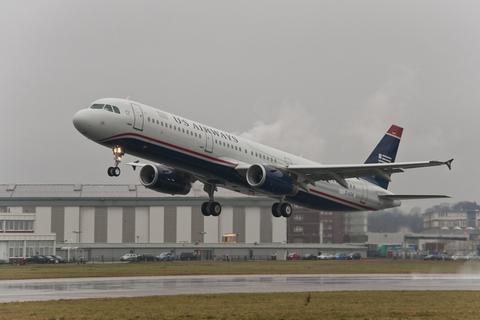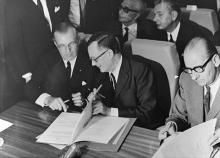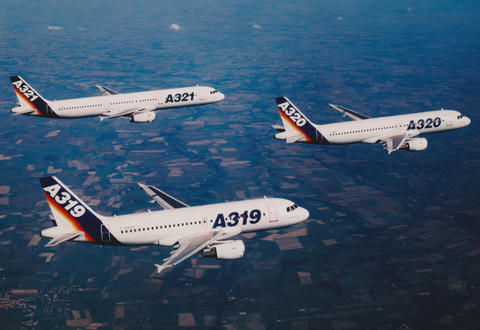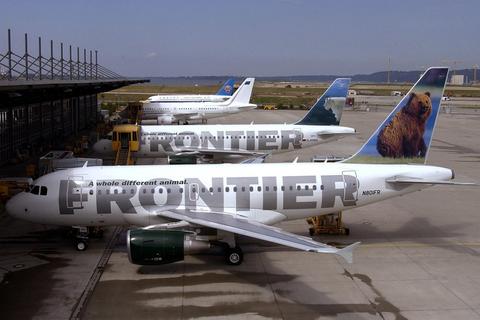At the 1993 Paris Air Show, Airbus showed the world what the A340 – which had entered service earlier that year with Lufthansa and Air France - could do. An A340-200 dubbed the “World Ranger” set a series of records by flying around the globe with only one refuelling stop.
From Le Bourget, it flew to Auckland in New Zealand and after just five hours on the ground continued its flight around the world to land in Paris 48 hours and 22 minutes after setting out. Such showmanship, albeit with a serious purpose, was a badly-needed tonic for an industry suffering its worst-ever financial crisis. The downturn which followed the first Gulf War lasted nearly three years.
Yet Airbus had continued to pursue its ambitious new objective of capturing 50% of the world market. In 1994, it almost achieved it for the first time as passenger numbers returned to normal, industry confidence surged back and aircraft sales picked up considerably. During the year – which saw the wide-body A330 and the single-aisle A321 enter service - Airbus recorded 125 firm sales from 11 customers, compared to just 38 orders the year before. (In October 1993, the A330 had become the first aircraft to be simultaneously certified by the European Joint Aviation Authorities and the U.S. Federal Aviation Administration.)
Of the 1994 orders, 95 were for single-aisles, including 42 for the A319 - which was two years away from roll-out. The A330/A340 Family attracted 30 orders. Another milestone reached the same year was the 1000th delivery of an Airbus aircraft. To Airbus, this success, coming as it did on the back of a period of downturn, validated its strategy of offering families of aircraft sharing commonality to cover all sectors. The same year also saw another development in the commercial success of Airbus aircraft. The first A300-600 Freighter was delivered to Federal Express, marking the arrival of what was to become the most popular freighter on the market.
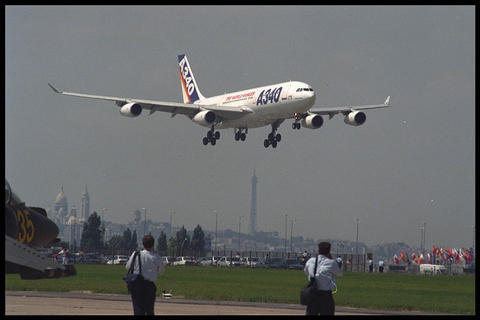
The four-engine A340 has greater range at lower cost than any other long-range wide-body commercial jetliner.
An increasingly global presence
Airbus now had 16 manufacturing sites in Europe. The Super Guppy which had transported components for Airbus aircraft to Toulouse (and more recently to Hamburg) was replaced by the A300-600 Super Transporter, which would become known as the Beluga. Airbus had established offices, training centres and spares centres around the world, with strongholds in North America, China and Japan (Airbus would later set up subsidiaries in all three).
It was able to offer customers a degree of product support comparable to the quality of its aircraft. Recognising that to maintain its own profitability Airbus occasionally had to be able to help airlines buy its aircraft, it also set up a finance company, based in Dublin, Ireland, which provided credit facilities.
As Airbus celebrated its 25th anniversary year in 1995, its success in challenging what had once been the American domination of the aviation industry was beyond doubt. Indeed, it was now vying for the top spot. Since the entry into service of the A320 in 1988, Airbus had brought to market five new aircraft models, a remarkable output.
And it was outselling its rivals in all the categories in which it was represented. At the start of the year, Airbus published its annual calendar with a series of stunning floral pictures, each month annotated with key dates from the evolution of the company. In the introduction to the calendar Airbus management thanked employees and pronounced the company “experienced, fit and growing stronger every day.”
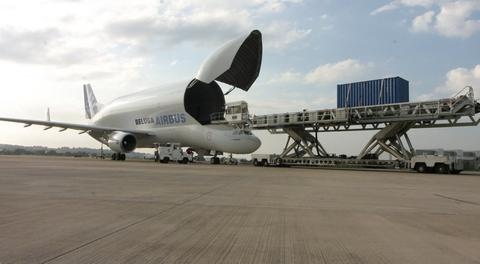
The Airbus Beluga features one of the most voluminous cargo holds of any civil or military aircraft flying today.
Getting serious about the A3XX
Further evidence of this increasing strength came on 1 May, 1996, when Airbus announced it had set up a “large aircraft division” to develop plans for the A3XX. This was the moment Airbus is said to have “got serious” about its vision of an aircraft which would carry around 600 people and dominate the most lucrative end of the market. The role of the newly created division, said Airbus, was to “further refine the market studies undertaken so far, to define the basic specifications of the new airliner, taking into account the design studies done since 1990 and inputs from the airline working group.”
But the unprecedented size of the A3XX programme and the financial risks involved required a bold and imaginative approach to development funding. Airbus said its large aircraft division “will also look into the broadening of the industrial and financial structures for the programme and establish a business case.”
When Noël Forgeard took over from Jean Pierson as President and Chief Executive Officer in January, 1998, he found an organisation in great form – 1997 had been a record year for sales, with 460 firm orders and 13 new customers. (Firm orders included 124 A319 and A320s for US Airways, consolidating Airbus’ foothold in North America, and the milestone of the 2,500th firm order received by Airbus since it began.) Airbus had won 50% of the market. Plans to build the A3XX were well advanced. Ever mindful of the need to listen to customers, Airbus was in consultation with some 20 leading airlines about what they wanted to see in the new double-decker.
And within weeks of Forgeard’s arrival Airbus won a major order, the first from British Airways: 59 A319s and A320s, with options for a further 129. It was British Airways’ biggest ever order for new aircraft and opened the way to a new relationship with Airbus and the British flag carrier. Tony Blair, the British prime minister, travelled to Toulouse for the celebrations.
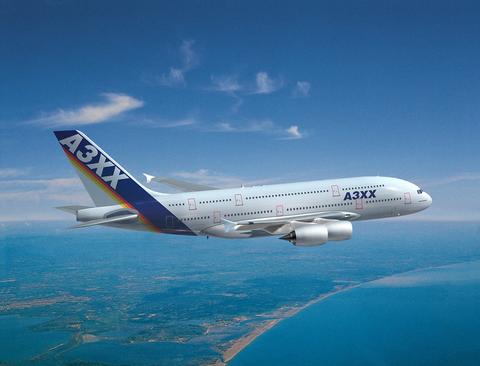
For its A3XX programme, Airbus consulted with more than 20 leading airlines around the world.
An optimised corporate structure
The success continued during 1998, another record year which saw Airbus clinch 52% of the market for new aircraft with 556 firm orders, a figure still unsurpassed by Airbus in addition to the A3XX Airbus, was developing new versions of the A340: the A340-500 which would become the longest-range aircraft in the world; and the A340-600, which would carry 380 passengers in the longest fuselage of any aircraft yet built, with a cabin whose standards of comfort and innovation were unmatched. In the following year it would also launch the A318, the 107-seat “baby” of the A320 Family.
Yet it had long been accepted within Airbus that if it was to continue building on its success, its structure had to be streamlined and placed on a conventional company footing. Up to now the partners had operated as both shareholders and suppliers.
None of them were under any obligation to disclose their profits from Airbus programmes. Forgeard, a former adviser to French President Jacques Chirac, had come to Airbus with the express objective of leading it into a new era as a single integrated company.
The process would not be easy, or smooth. The privatisation of Aerospatiale in 1998 and its merger with Matra was the catalyst for a series of behind-the-scenes talks between pairs of Airbus partners. The situation was eventually resolved with a merger of Aerospatiale (now a third owned by the Lagardère Group) DASA and CASA of Spain to become the European Aeronautic Defence and Space Company. EADS would own 80% of the new Airbus company, while BAE SYSTEMS – as British Aerospace became known after its merger with Marconi in 1999 – would hold the remaining 20%.
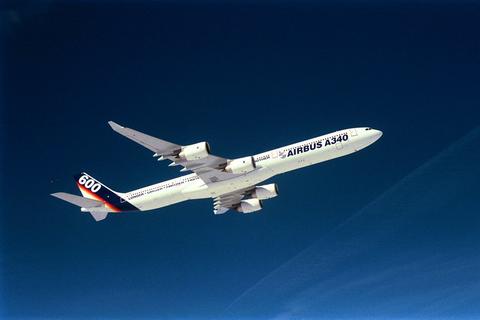
With an overall length of 75.3 metres, the A340-600 is the longest-fuselage jetliner ever built by Airbus.
Industrial launch of the A380
The new integrated company, Airbus S.A.S. (Societé par Actions Simplifieé) began operations in July, 2000. A shareholders’ board of seven members, five from EADS and two from BAE SYSTEMS, would decide on new programmes and investments. It would also appoint members of the Airbus executive committee who would be based in Toulouse and be responsible for all core functions and strategy.
In 1999, Airbus Military was set up with a view to producing the A400M, the first Airbus military transport aircraft in consultation with a number of European governments. It was, as Noël Forgeard declared, “a very significant event in the life of our company. Not only does it open up an entirely new market opportunity, it also represents a major integrated venture of key European aerospace actors in the field of military air transportation.”
And in the first year of the new millennium, on 19 December 2000, came the industrial launch of the A3XX, from now on to be known as the A380, the “flagship of the 21st century”. With 50 firm orders and 42 options from six of the world’s major operators spread across five continents (Air France, Emirates, International Lease Finance Corporation, Qantas, Singapore Airlines and Virgin Atlantic) the programme to produce the world’s largest and most advanced passenger aircraft - capable of carrying 525 people in a three-class configuration - was officially under way.

